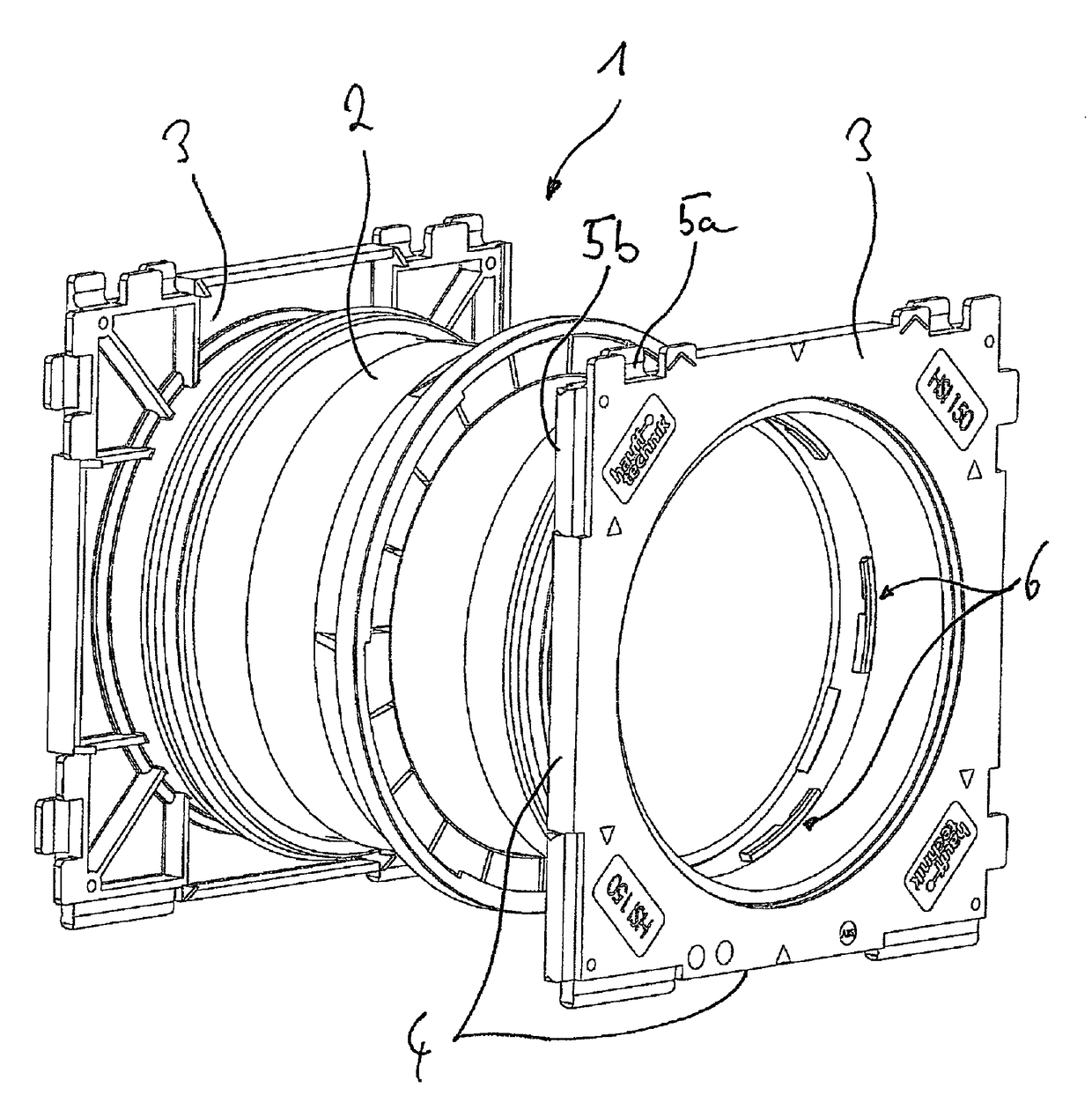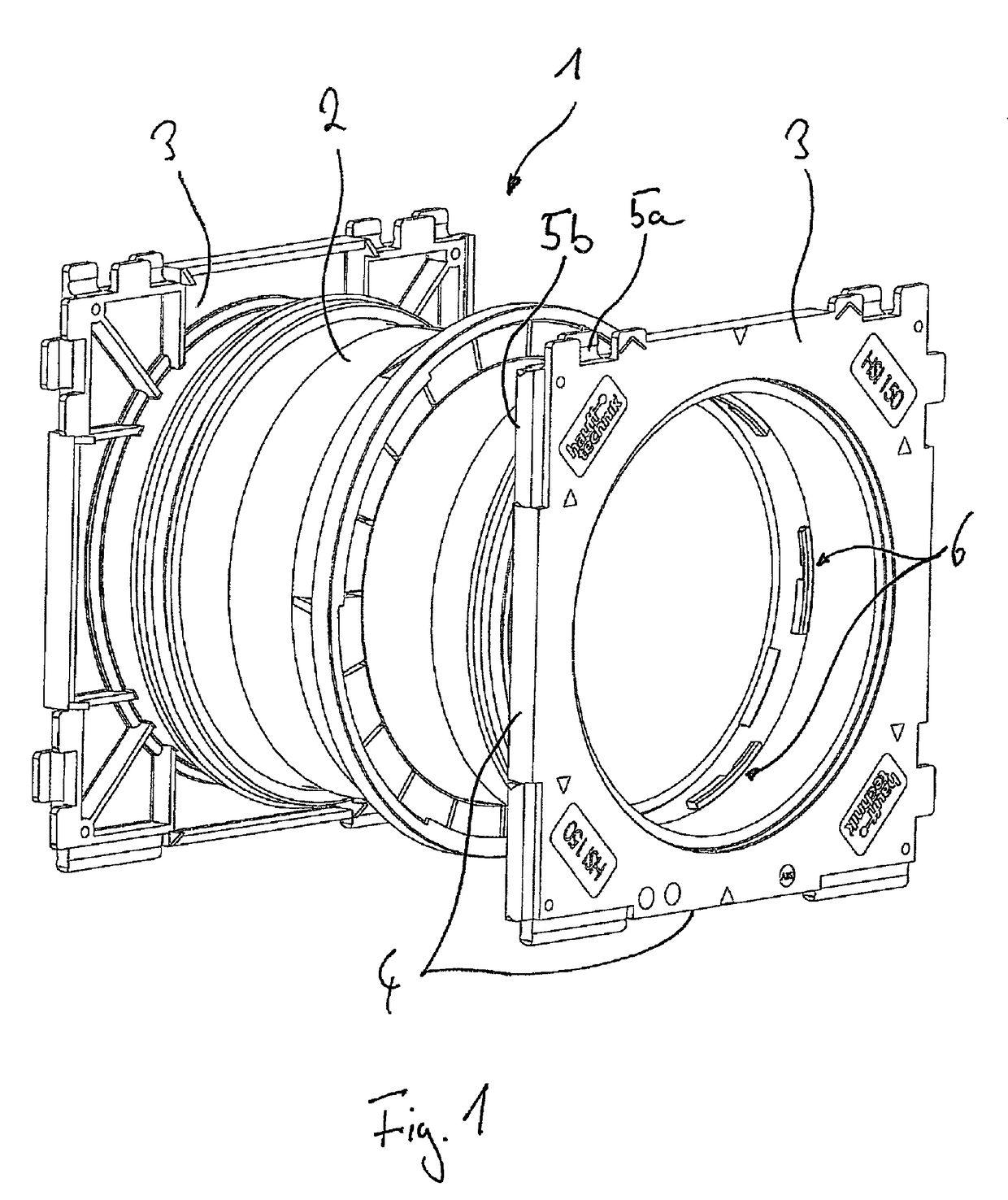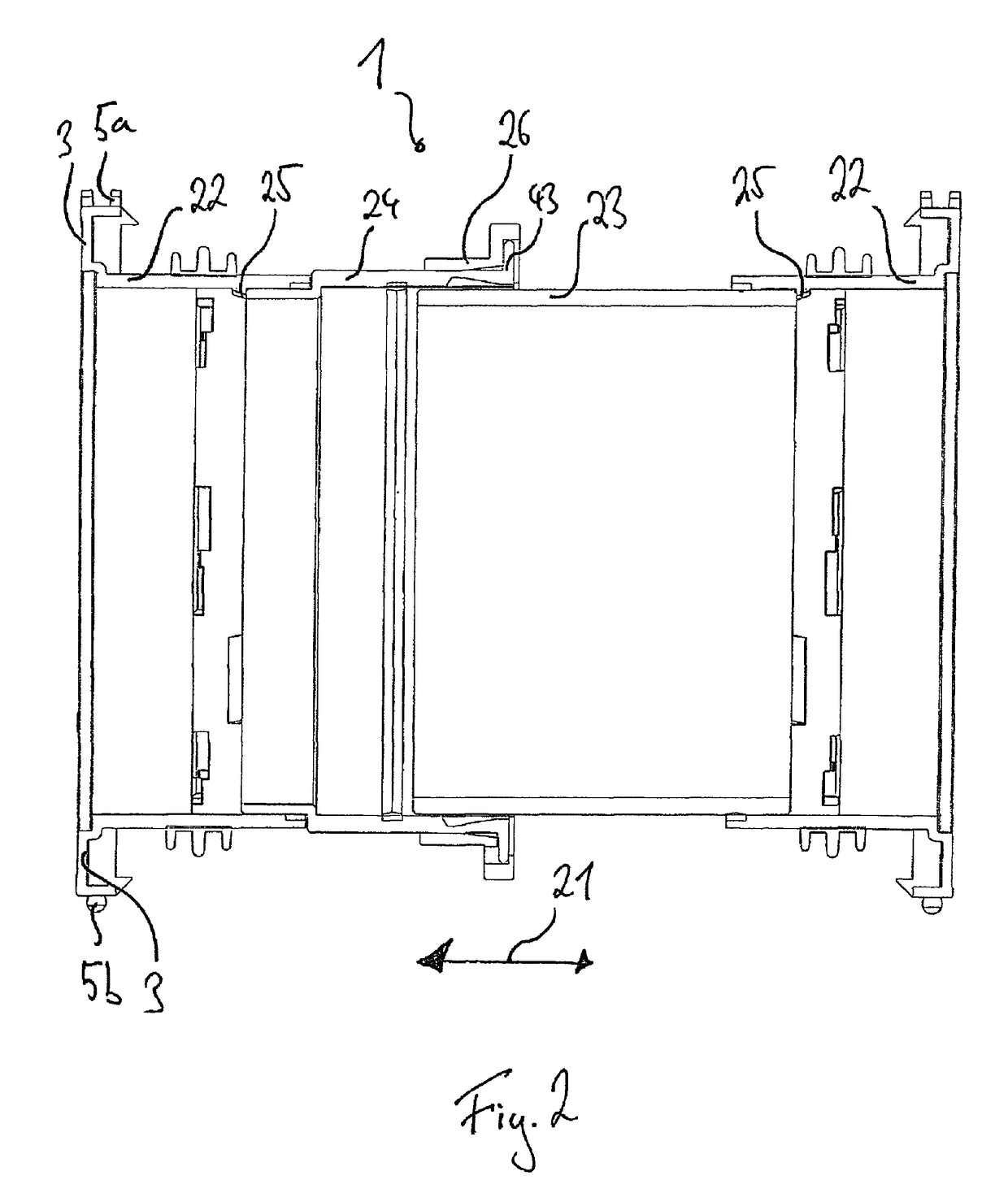Use of a feed-through for installation in a wall or floor element
a technology for installing walls and floor elements, applied in pipes/joints/fittings, forms/shuttering/falseworks, pipes, etc., can solve problems such as unintended water entering and propagating along the outside of tube elements
- Summary
- Abstract
- Description
- Claims
- Application Information
AI Technical Summary
Benefits of technology
Problems solved by technology
Method used
Image
Examples
Embodiment Construction
[0063]FIG. 1 shows a duct 1 according to the invention for an insertion into a wall, the duct having a tube element 2. At both ends of the tube element 2, a flange plate 3 is provided respectively as a fixture element. After the insertion of the duct 1 into the wall, the two flange plates 3 lie adjacent to the respective wall area by their outer front face respectively, the tube element 2 keeping clear a through-opening between the two sides of the wall then. Prior to the casting, the duct can be mounted at the formwork by the flange plates 3, for instance by nailing or screwing together with the formwork elements which the flange plates 3 contact with their front faces. Then, the formwork is filled up with concrete and the formwork elements are removed after the latter has hardened.
[0064]At the side edges 4 of the flange plates 3, respectively in an edge region, connection elements are provided, namely groove 5a and tongue elements 5b engaging each other in a form-fit manner. The t...
PUM
 Login to View More
Login to View More Abstract
Description
Claims
Application Information
 Login to View More
Login to View More - R&D
- Intellectual Property
- Life Sciences
- Materials
- Tech Scout
- Unparalleled Data Quality
- Higher Quality Content
- 60% Fewer Hallucinations
Browse by: Latest US Patents, China's latest patents, Technical Efficacy Thesaurus, Application Domain, Technology Topic, Popular Technical Reports.
© 2025 PatSnap. All rights reserved.Legal|Privacy policy|Modern Slavery Act Transparency Statement|Sitemap|About US| Contact US: help@patsnap.com



